Lentils are unique in the legume world for their ability to cook up in 20 minutes or less, with no soaking required. A cup of cooked lentils weighs 7 ounces, which is half an ounce less than a cup of dry lentils; however, it’s necessary to consider the volume of the lentils when comparing weight. These small, dry legumes more than double their bulk once they’re cooked because the cooking liquid causes them to swell and plump up as they hydrate.
Weighing Equal Amounts
An 8 ounce cup of dry lentils weighs in at 7.5 ounces, but when cooked, the lentils soak up the cooking liquid. That cup of dry lentils more than doubles its volume, producing 2 1/2 cups -- or 20 ounces -- of cooked legumes. Those 2 1/2 cups of cooked lentils weigh in at 17.5. ounces, which is a weight gain of 10 ounces, and a volume gain of 12 ounces. Without considering the volume gain of cooked lentils, it would appear that cooked lentils weigh less, when in fact every 8 ounces of dry lentils gains 10 ounces of water.
Calculating Protein and Portion Size
Weighing your food before cooking is a way to control portion size and calories. Sources of protein such as lean cuts of meat, fish and cheese are usually calculated by weight before cooking. According to Michigan State University Extension services, four tablespoons of cooked lentils is the equivalent of a 1 ounce serving of protein. To avoid the confusion in volume differences, use the weight of your cooked lentils to calculate the weight of lentils as a protein source. Four tablespoons of cooked lentils weighs 1.75 ounces. Four tablespoons of dry lentils before cooking weighs about 1.88 ounces, but once cooked, the volume increases to yield 10 tablespoons of lentils, which is slightly more than 1 cup, and more than 4 ounces of protein.
Cooking by the Pound
Common brown lentils are easily found in the grocery store and sold in 1-pound bags. When dry, a 1-pound bag of lentils measures out to 2 1/3 cups. When cooked, however, a pound of dry lentils yields 7 cups of cooked lentils, which weighs 49 ounces, or a little more than 3 pounds. Look for a larger variety of lentils at co-ops and specialty markets offering bulk goods. Lentils dispensed in bulk are sold by weight, giving you control over exactly how much you buy.
Considering Lentil Variety
The cooking times of lentils vary slightly according to the kind of lentil and how it will be used. Red lentils, which cook up a golden orange in as little as 15 minutes, are the softest variety and a good choice for creamy sauces, soups or dals where a smooth texture is desired. Green lentils are the most expensive, hardest to find, and the most firm, taking 30 minutes or more to cook. These lentils, also known as French green, are a good choice for salads or main dishes where the shape and texture of the lentil are featured. Brown lentils are the most commonly used and take from 20 to 30 minutes to cook, depending on the desired firmness.
Related Articles

Steaming vs. Boiling vs. Baking Carrots

List of High Protein Vegetables
How to Make Lentils Into a Meat ...

How to Measure Flour Without Scales
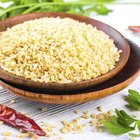
Bulgur Vs. Farro
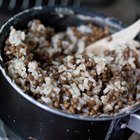
Rice & Lentil Diet

How to Soften Lentils

Substitutes for Garbanzo Bean Flour
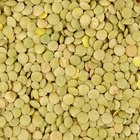
How to Cook Trini Style Lentils

The Difference Between a Red Quinoa & a ...
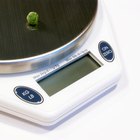
How to Convert a Measuring Cup to a ...

How to Cook With Kamut

Calorie Count of Beans

Bulgar Wheat Vs. Couscous
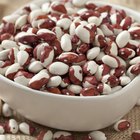
The Nutritional Value of Anasazi Beans ...
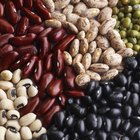
How to Cook Purple Hull Peas in the ...

Types Of Almonds

How to Cook Foster Farm Chicken Breast ...
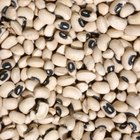
How to Freeze Black-Eyed Peas or Cowpeas

Nutrition Information for Adzuki Beans
References
Writer Bio
For more than 10 years, Carol Butler has run a small, off-grid furniture business with her husband and is a regular contributor to the Edible community of magazines. As staff writer for RichLife Advisors, she covers financial planning and other industry-related topics. She holds a B.F.A. in theater arts.